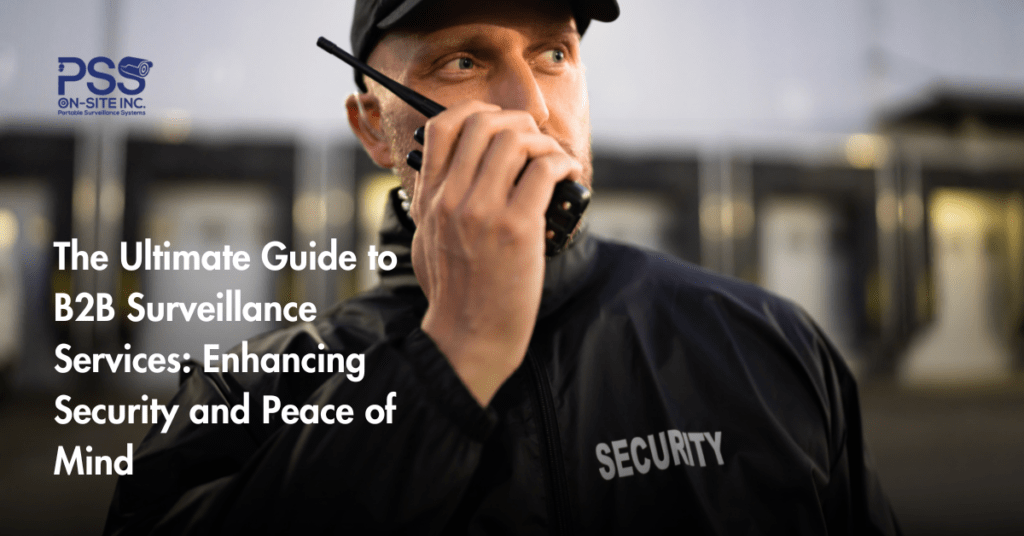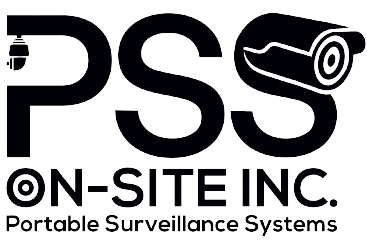In today’s complex business landscape, ensuring the security and safety of commercial premises is paramount. Business-to-business (B2B) surveillance services have emerged as indispensable tools for enhancing security and providing peace of mind to business owners and operators. This comprehensive guide explores the various facets of B2B surveillance, from defining the systems to addressing legal considerations and emerging trends.

Introduction to B2B Surveillance
Defining B2B Surveillance Services
Business-to-business (B2B) surveillance services encompass a range of technologies and systems designed to monitor, record, and protect commercial properties and assets. Unlike traditional consumer-focused surveillance, B2B solutions are tailored to meet the specific security needs of businesses.
Importance in Business Security
Effective surveillance is critical for safeguarding against theft, vandalism, unauthorized access, and other security threats that can impact operations and profitability. B2B surveillance offers proactive measures to mitigate risks and ensure a secure environment.
Types of B2B Surveillance Systems
Closed-Circuit Television (CCTV) Systems
CCTV systems are the backbone of B2B surveillance, providing real-time monitoring and recording capabilities. These systems use cameras strategically placed throughout a facility to capture and transmit video footage.
Access Control Systems
Integrating access control with surveillance enhances security by restricting entry to authorized personnel only. This system includes keycards, biometric readers, and other mechanisms to manage access points.
Alarm Systems
Intrusion detection alarms complement surveillance by triggering alerts in response to unauthorized access or suspicious activities, prompting immediate action.
Video Analytics and AI Integration
Advanced surveillance systems employ video analytics and artificial intelligence (AI) to automate monitoring processes, detect anomalies, and optimize resource allocation.
Key Components of B2B Surveillance
Cameras: Types and Specifications
B2B surveillance cameras vary in type (e.g., dome, bullet, PTZ) and specifications (e.g., resolution, field of view), offering flexibility to meet diverse security needs.
Monitoring Stations
Centralized monitoring stations enable continuous surveillance oversight, providing real-time updates and alerts to designated personnel.
Data Storage Solutions
Secure data storage solutions ensure retention and accessibility of recorded footage for investigative and compliance purposes.
Remote Access and Control
Cloud-based surveillance systems allow remote access and control, enabling businesses to monitor their premises from anywhere, anytime.
Benefits of B2B Surveillance Services
Crime Prevention and Deterrence
Visible surveillance systems act as deterrents to criminal activities, reducing the likelihood of theft or vandalism.
Enhanced Monitoring of Business Premises
Continuous surveillance provides comprehensive coverage of business premises, enabling proactive response to security incidents.
Improved Response to Security Threats
Real-time alerts and notifications empower businesses to respond swiftly to security threats, minimizing potential damages.
Choosing the Right B2B Surveillance System
Assessing Business Needs
Identifying specific security vulnerabilities and operational requirements helps in selecting appropriate surveillance solutions.
Budget Considerations
Balancing cost considerations with security requirements ensures optimal investment in surveillance technologies.
Scalability and Future-Proofing
Choosing scalable systems that can accommodate future growth and technological advancements maximizes long-term benefits.
Integration with Other Security Measures
Access Control and Surveillance
Integrating access control systems with surveillance enhances overall security by controlling physical entry and monitoring activities.
Alarm Systems and Surveillance
Combining intrusion detection alarms with surveillance enables comprehensive threat detection and response capabilities.
Cybersecurity and Data Protection
Ensuring cybersecurity protocols protect surveillance data from unauthorized access or cyber threats.
Legal and Ethical Considerations
Compliance with Data Privacy Laws
Adhering to data privacy regulations (e.g., GDPR, HIPAA) when capturing, storing, and processing surveillance data.
Employee Consent and Monitoring Policies
Establishing clear policies and obtaining employee consent for workplace surveillance to address privacy concerns.
Installation and Maintenance
Professional Installation Services
Engaging certified professionals for installation ensures optimal setup and performance of surveillance systems.
Routine Maintenance and Upgrades
Regular maintenance and upgrades extend the lifespan and effectiveness of surveillance equipment.
Emerging Trends in B2B Surveillance
Artificial Intelligence Applications
AI-driven analytics enhance surveillance capabilities by automating threat detection and analysis.
Cloud-Based Surveillance Solutions
Cloud integration enables remote access, scalability, and enhanced data security for surveillance systems.
IoT Integration
Connecting surveillance systems with IoT devices enables smart monitoring and predictive analytics.
Conclusion:
Incorporating B2B surveillance services is a strategic investment for businesses seeking to fortify their security posture. By leveraging advanced technologies and proactive monitoring, businesses can safeguard assets, mitigate risks, and cultivate a secure environment conducive to productivity and peace of mind. Embrace the power of B2B surveillance to protect what matters most and elevate your security standards in today’s dynamic business landscape.
